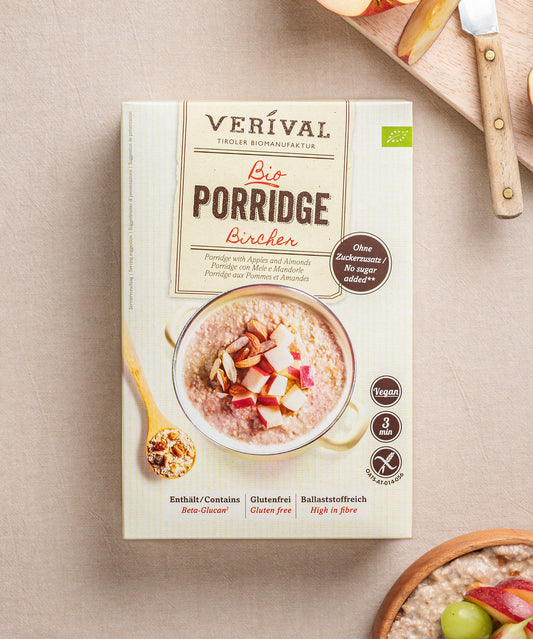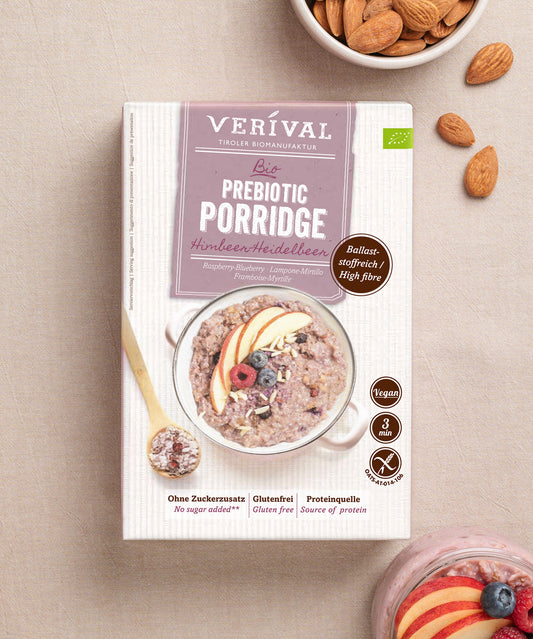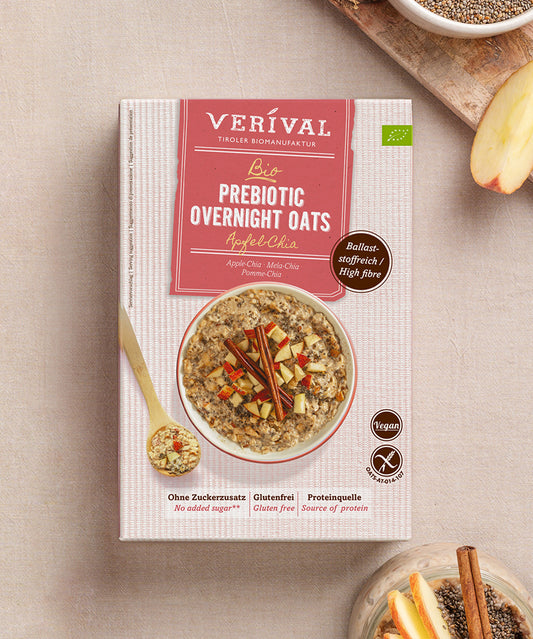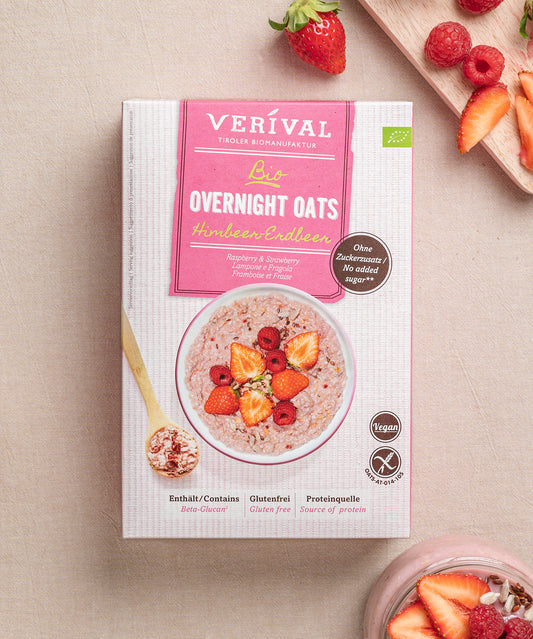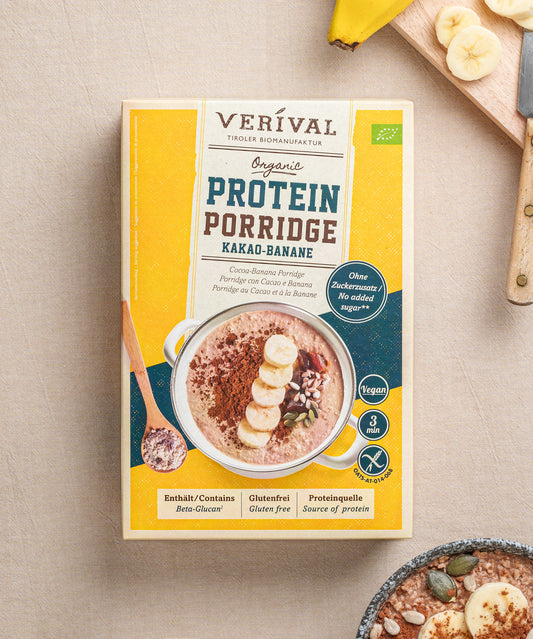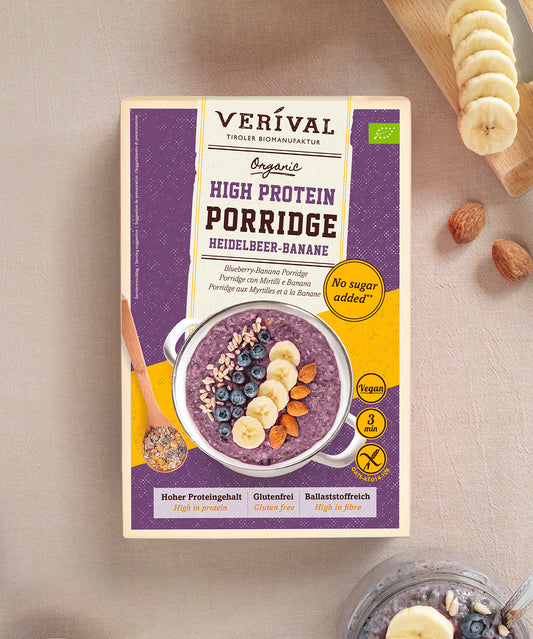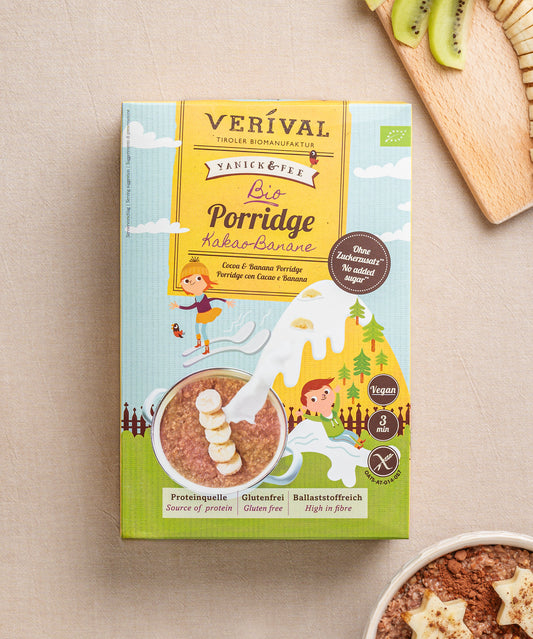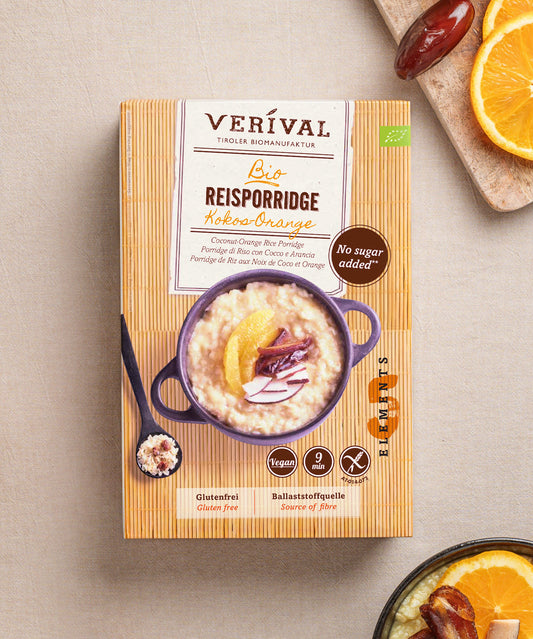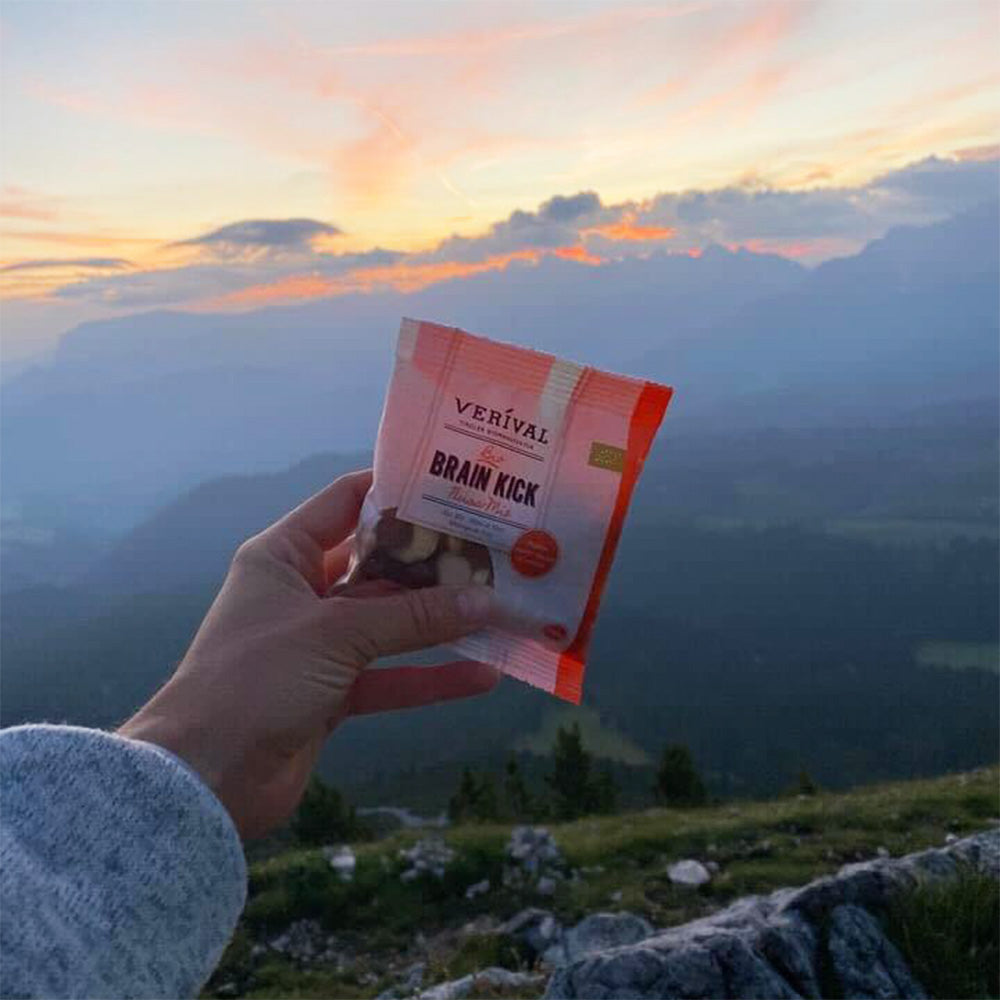Dietary fiber plays a crucial role in a balanced diet and is of great importance for our health. Bananas are not only known for their sweet taste, but also for their rich nutritional composition. Fiber in bananas promotes digestion, helps regulate blood sugar levels and supports the cardiovascular system.
In today's blog post, you will learn why fiber and bananas are a dynamic combination for your health and how they can become a tasty and healthy part of your diet. Let's delve into the fascinating world of bananas and fiber together!
Banana – everything you need to know!
Dietary fiber in your diet – The importance for your health
Dietary fiber is essential for a balanced diet and has a significant influence on our health. In this article, you will learn why dietary fiber is so important and how it can have a positive effect on your well-being.
This special form of carbohydrate, which is found in plant-based foods, aids digestion and helps to stabilize blood sugar levels. In addition, fiber helps to lower cholesterol and aids in weight management. When losing weight, bananas can help, as they keep you fuller for longer.
By including high-fiber foods in your diet, you can improve your gut health and prevent inflammation. Adequate fiber intake also plays a role in the prevention of cardiovascular disease.
The nutritional benefits of bananas – that's why bananas are healthy
Bananas are not only delicious, but they are also a real powerhouse of health benefits. In this article, you will learn how regular consumption of bananas can positively influence your health.
This delicious fruit is rich in important vitamins and minerals such as vitamin C, potassium and magnesium, which are essential for your well-being. Bananas are an excellent source of fiber, which aids digestion and prevents constipation.
In addition, bananas can protect the cardiovascular system by regulating cholesterol levels and lowering blood pressure. Their natural sweetness makes them a healthy source of energy for your active lifestyle.
Banana nutritional information
You consume about 100 calories per banana. Bananas have a low protein content and a high carbohydrate content. Read more about the nutritional value of bananas and the carbohydrates in bananas.
| Nutritional value | 100 g banana |
| Fat | 0.2 g |
| Carbohydrates | 22 g (of which 17 g are sugars) |
| Protein | 1.1 g |
| Dietary fiber | 2 g |
Verival Porridge with banana- discover it here
The dietary fiber content of bananas
The dietary fiber content of bananas is an important factor for our health. In this article, we take a deeper look at the importance of dietary fiber in bananas and how it positively affects our well-being.
An average-sized banana contains about 3 grams of fiber, which plays a crucial role in healthy digestion. Fiber promotes the regulation of blood sugar levels and helps keep cholesterol levels in check.
These valuable nutrients also aid weight management by promoting a long-lasting feeling of satiety. By promoting gut health, fiber can prevent constipation and improve digestive tract health.
Comparing the fiber content of bananas with other fruits
When it comes to fiber content, bananas get all the attention. But how do they compare to other common fruits? In this article, we take a look at the fiber content of various fruits and discover which fruit reigns supreme.
An average-sized banana contains about 3 grams of fiber. By comparison, berries like raspberries and blackberries are true fiber bombs, with up to 8 grams per serving. Apples and pears also fare well, offering around 4-5 grams of fiber per fruit.
Nevertheless, we must not underestimate the overall benefits of bananas. Their delicious sweetness, rich nutritional composition and versatile uses make them a popular and healthy choice.
Dietary fiber and ripe or green bananas: the influence of ripeness on the dietary fiber content of bananas
The degree of ripeness of a banana has a remarkable influence on its dietary fiber content and health properties. While green, unripe bananas contain less dietary fiber, its content increases significantly during the ripening process.
In green bananas, the fiber is in the form of resistant starch, which is difficult for the body to digest. As ripening progresses, this resistant starch converts into soluble fiber. These are more easily accessible to our body and offer a wealth of health benefits.
Ripe bananas therefore contain a higher amount of easily digestible fiber, which promotes intestinal health and can prevent digestive problems. The soluble fiber pectin in bananas is not only good for the stomach, it also regulates blood sugar levels and supports the cardiovascular system.
The riper the banana, the higher the sugar content. A ripe banana thus provides even more quick energy. People with type 2 diabetes should therefore opt for green bananas. The most common sugars in ripe bananas are sucrose, fructose and glucose.
Bananas can help you with gut health
The health benefits of high-fiber bananas
High-fiber bananas offer a wealth of specific health benefits that make them a valuable part of a balanced diet. Their high fiber content plays a crucial role.
The dietary fiber in bananas promotes healthy digestion and can effectively prevent constipation. Due to their ability to regulate cholesterol levels, they help protect the cardiovascular system. They also help maintain stable blood sugar levels, which is particularly beneficial for diabetics.
High-fiber bananas also help to provide a long-lasting feeling of satiety, which can aid in weight management. In addition, they promote healthy gut flora and reduce the risk of inflammatory diseases in the digestive tract.
Give your body the nutrient-rich support it deserves by incorporating bananas into your diet as a tasty and healthy addition.
Bananas and gut health
The positive effect of fiber-rich bananas on gut health is remarkable and makes them a valuable choice for our well-being. Thanks to their high fiber content, bananas play an important role in the care of our digestive system.
The dietary fiber in bananas promotes healthy intestinal flora by favoring the growth of good bacteria. This supports optimal digestion and helps to reduce unwanted digestive discomfort such as bloating.
In addition, fiber acts like a gentle brush in the intestinal tract, helping to efficiently eliminate waste from the body. This can prevent constipation and improve overall bowel function.
By acting as an anti-inflammatory, fiber-rich bananas can also help support gut health and reduce the risk of inflammatory bowel disease.
Bananas and fiber in your diet: tips and tricks
Bananas are not only delicious, but also versatile. Here are some practical tips on how you can successfully integrate these nutrient-rich fruits into your daily diet.
Smoothies and shakes: Blend ripe bananas with fresh fruit and yogurt for a delicious smoothie that will give you an energy boost to start the day.
Oatmeal breakfast: Cut a banana into your warm oatmeal to add natural sweetness and extra fiber.
Snack for on the go: Pack a banana in your bag for a healthy snack between meals – perfect for hunger on the go.
Banana bread: Use ripe bananas (highly sweet due to their high fructose content) to bake a moist banana bread that not only tastes great but is also high in fiber. We have the perfect recipe for you:
Ice cream alternative: Cut up frozen bananas into slices and puree them – voilà, you have a healthy ice cream alternative! Top it off with some nuts if you like!
Salads: Add banana slices to your fruit salad or green salad for a sweet and healthy touch.
Banana pancakes: Whisk ripe bananas into your pancake batter for natural sweetness and added fiber.
Find out how easy it is to incorporate bananas into your diet and benefit from their health advantages. With their versatility and delicious sweetness, bananas are a delicious addition to a balanced diet and help to provide your body with valuable fiber.
Perfect for athletes – the Verival protein breakfast
Conclusion: fiber and bananas
In this article, we have highlighted the importance of fiber in bananas and its positive effects on health. Bananas are not only delicious, but also a valuable source of fiber, which plays a crucial role in our well-being.
The fiber in bananas promotes healthy digestion, regulates blood sugar levels and supports the cardiovascular system. They contribute to intestinal health by promoting a healthy intestinal flora and preventing constipation.
Bananas offer a variety of ways to be incorporated into our diet, whether it be in smoothies, oatmeal, or as a healthy snack on the go. With their natural sweetness, they are not only a tasty but also a nutrient-rich addition to our daily diet.
Conclusion: Are bananas healthy?
By regularly including bananas in your diet, you can benefit from the numerous health advantages they offer. The fiber in bananas plays a central role in keeping you fit, vital and healthy. The fiber contained in bananas has a particularly favorable effect on the growth of anti-inflammatory intestinal bacteria, for example.
100 grams of banana already cover 12 percent of the daily requirement of vitamin C. Bananas also contain vitamin A, vitamin K and various vitamins of the B group, especially vitamin B6. They also provide trace elements such as phosphorus, calcium, iron and zinc.
So, eat the yellow fruit more often and ensure a nutritious and tasty support for your health. Bananas are the sweet and healthy choice when it comes to fiber and an all-round good feeling. Bananas are a valuable source of energy for your everyday life – whether you are doing sports or working in the office!
Porridge with banana – discover it now!
Some more interesting information about bananas:
The most common type of banana available for purchase is the dessert banana, known as the Cavendish. It is green when unripe.
In Africa, the cooking banana is used a lot in cooking. It tastes a bit like potatoes or carrots. The cooking banana is suitable for boiling, frying, steaming or baking. It is not very suitable for eating raw.
A banana plant bears fruit only once in its lifetime. Up to 300 fruits can hang from a single banana tree.
If a banana has brown spots, it is at its best (in terms of nutrients) and ready to be eaten – but tastes differ – some people like them best when they are still completely yellow.
Bananas ripen faster when stored next to apples. Apples release ethylene, which boosts ripening.
Bananas have a relatively low glycemic index (GI) of 42–58, depending on their degree of ripeness – in other words, your blood sugar level will rise only slowly after eating a banana.
Very unripe, green bananas contain a lot of cellulose, which the intestines cannot digest so well, so this can cause abdominal pain – so a little caution is advised here.
Frequently asked questions
Is a banana high in fiber?
Bananas are high in fiber, containing about 3 grams of fiber per average-sized fruit. They support healthy digestion, regulate blood sugar levels and promote gut health. As a delicious and versatile fruit, they are easy to incorporate into your diet to reap the health benefits.
How good are bananas for your gut?
Bananas are good for your gut because they support healthy digestion, prevent constipation and promote healthy intestinal flora. The soluble fiber they contain helps to efficiently eliminate waste from the body and reduce the risk of inflammatory bowel disease. Their nutrient density and digestibility make bananas an ideal choice for healthy gut function.
Is a banana healthier than an apple?
Both bananas and apples are healthy fruits with different nutrient profiles and health benefits. Bananas are high in fiber, potassium, and vitamin B6, while apples contain vitamin C, antioxidants, and fiber as well. A varied diet including both fruits is advisable as they each offer unique benefits for balanced health.
What is the maximum number of bananas one should eat per day?
The recommended amount of bananas depends on individual factors. In general, 1-2 bananas per day in a balanced diet is safe and provides many health benefits. It is advisable to eat a variety of fruits to benefit from different nutrients. For specific health concerns, a specialist should be consulted.
When is the ideal time to eat a banana?
The ideal time to eat a banana varies depending on individual preferences and needs. Bananas are suitable as a healthy snack between meals, before or after exercise for energy and muscle recovery, and as a sweet addition to other foods such as smoothies or oatmeal. The flexible nature of bananas allows them to be incorporated into a daily routine that best suits personal dietary goals.
What is dietary fiber?
Dietary fiber is a type of carbohydrate found in plant-based foods. There are soluble fibers, which dissolve in water and regulate cholesterol levels, and insoluble fibers, which promote intestinal motility. A diet rich in fiber is important for healthy digestion, nutrient absorption, and protection against certain diseases.
What are the benefits of fiber?
Fiber offers numerous benefits, including promoting digestive health, controlling blood sugar and cholesterol, aiding in weight management, promoting cardiovascular health and gut health, and reducing the risk of colorectal cancer. A diet high in fiber is important for overall well-being and can help protect against various diseases.
Why do bananas blacken in the fridge?
The cold stimulates an enzyme that causes the banana peel to blacken faster. This is only a minor blemish, so to speak. The banana can be eaten as normal.
Can you eat green bananas?
During ripening, the starch in bananas is converted into sugar, which is why yellow bananas taste sweeter than green ones. Very unripe, green bananas contain a lot of fiber, which the intestines cannot digest as well, so digestive problems and stomach aches can occur. Generally speaking, there is no harm in eating green bananas, but each person's tolerance varies.



